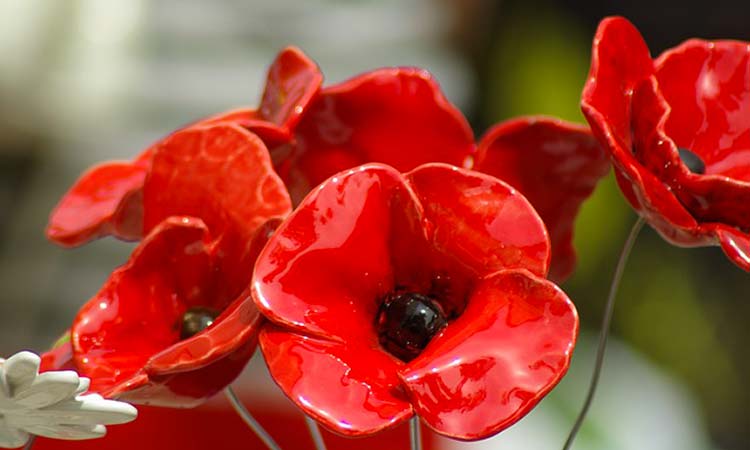Family Mediation Week 16-20 January 2023 Family Mediation Week is an opportunity to raise awareness of family mediation and of the benefits it can bring to separating families. The aim of this week is to let more people know about the benefits of...
Stoke on Trent has welcomed the Weeping Window to Middleport Pottery. This is a cascade comprising several thousand handmade ceramic poppies seen pouring from a high location to the ground below.
The sculpture, alongside Wave, a sweeping arch of bright red poppy heads suspended on towering stalks by artist Paul Cummins and designer Tom Piper were initially conceived as the key dramatic sculptural elements in the installation Blood Swept Lands and Seas of Red at the Tower of London in the summer and autumn of 2014.
Over the course of their time at the Tower, the sculptures were gradually surrounded by a vast field of ceramic poppies, each one planted by a volunteer in memory of every British or Colonial life lost at the Front during the First World War. In their original setting they captured the public imagination and were visited by over five million people.
14-18 NOW, the UK’s arts programme for the First World War centenary, is presenting the iconic sculptures at selected locations around the UK until 2018. They have already been seen by 4 million people in 16 locations.
Weeping Window is from the installation Blood Swept Lands and Seas of Red – poppies and original concept by artist Paul Cummins and installation designed by Tom Piper – by Paul Cummins Ceramics Limited in conjunction with Historic Royal Palaces.
Stoke-on-Trent is officially recognised as the World Capital of Ceramics, and Middleport Pottery has been operating since 1889. During the First World War demand for the ceramics goods made in the area greatly increased. These included tableware for hospitals, homes and the military; propaganda-ware, including small ceramic tanks and battleships; plates with patriotic designs or messages on them; and ceramics to mark both the early stages of the war and the Armistice at the end.
The war also saw women taking on bigger roles in the pottery industry; with the men volunteering or being called-up, they came to the fore as decorators and designers, taking key roles from men and being recognised after the war as leading lights.
Middleport Pottery in Stoke-on-Trent is the last regional tour venue before it moves to its final presentation at Imperial War Museum London before moving into the long-term ownership of the Imperial War Museum.
Tickets can be purchased





